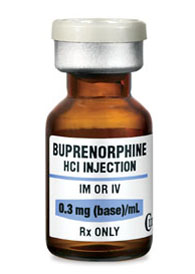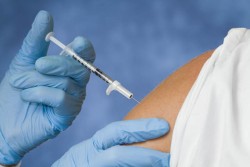Stress is a major cause of both drug use and relapse according to the National Institute on Drug Abuse. The holidays are extremely stressful particularly for those in recovery. Unfortunately, the holidays are also a time for relapse into drug and alcohol use. It is important to find ways to make sure that you stay on the path to recovery during the holiday season.
1. Schedule Extra Counseling Sessions
Many recovery and rehabilitation centers help those who might suffer from a holiday relapse. If you feel stressed or as if you are going to relapse into drug use, schedule extra sessions with your therapist or counselor. They can help you find constructive outlets for the cravings and stress.
2. Do Not Over Indulge
Over indulgence, leads to the feeling that you can do anything and still come out okay. Unfortunately, one thing may lead to another and soon you find yourself doing things that you would not ordinarily do. It is important to make sure that even during the holidays everything is in moderation.
3. Use Your Support System
The people that offered to be your support system are there for a reason. If you feel as if you are going to relapse or need support do not be afraid to use the support system you have in place already. By using this support system you can avoid relapse and stay on the road to recovery.
4. Practice Good Self Care
Take care of yourself during times of stress this includes the holidays. While preparing for the holidays, many people stop taking care of themselves. Instead of eating right and getting enough sleep, they push themselves. Some users relapse when they are tired and worn down.
5. Join a Community Group
There are many community support groups such as Narcotics Anonymous, that help keep people from relapsing. These groups support each other even during the holidays. They even have sober activities and parties for the holiday season.
6. Contact Family and Old Friends
If you are feeling the pressure of the holidays, get together with family or an old friend. This can both serve as a distraction and help keep you from using again.
7. If You Cannot Find a Meeting or Group Speak to Someone in Your Church
Many churches have pastors and deacons that are willing to help those trying to stay sober during the holidays. Most of them have office hours around the holidays and are willing to help you in your recovery.
8. Keep Busy
Find something to do. There are a variety of free sober activities that can distract you during the holidays. Invite some of your sober friends to join you in Geo-caching, walking, or hiking.
9. Volunteer Your Time
Volunteering both gives back to your community and helps you in your recovery. By volunteering you keep yourself busy and away from drugs. There are many volunteer opportunities such as animal rescues, shelters, and hospitals.
10. Check Yourself In
If you are all alone and feel as if you are going to relapse there are both inpatient and outpatient clinics that can help. For more information or to find one of these clinics call use at 1- 800-934-1582(Sponsored) .
The holidays are a time of join and togetherness, but they are also a time of stress and depression. According to the National Institute on Drug Abuse, stress is one of the leading causes of drug and alcohol abuse. The holidays are one of the most stressful times for some, particularly if they are in recovery but there are places to turn to if you feel that you are out of control or are going to relapse.
1. Outpatient Clinics
If you were in an outpatient program to get off drugs, chances are that program is still available. Call them and they will get you back into counseling. Many counseling centers are open over the holidays because of the stress associated with them. If you are still in counseling, simply ask you counselor what the holiday hours are or if they have a holiday help program. They also might have a crisis line and a crisis center set up for those who need it.
2. Local Community Centers
Many community centers offer holiday crisis help as well as information on meeting places such as Narcotics Anonymous. Some community centers have ongoing activities during the holidays that you can be a part of if you are not in crisis. Sometimes keeping busy during the holiday season can help when your are considering starting to use drugs again. Most community centers have counseling and crisis resources for those in need of them.
3. Friends and Family
If you are close to relapse, do not forget your support structure. Your friends and family can be your best resource. When you just need to talk your support structure is the best to turn to at times. They can also help to distract you from the stress that you are feeling. Talking to them and explaining that you need to be doing something can help you achieve the distraction you need.
4. Volunteer
During the holiday season, there are hundreds of volunteer opportunities. You can volunteer at:
- homeless shelters,
- domestic violence shelters,
- children’s homes,
- group houses,
- animal shelters,
- churches, and
- other community organizations.
There are many places that seek volunteers for the holiday season, particularly if you are willing to help on the actual holiday. Many of the shelters are glad to have the extra hands. There are also places that deliver food and presents to the homeless and disadvantaged that can use your services. Keeping busy helping others can help you avoid relapse.
5. Checking in to an Inpatient Clinic
If you have already relapsed or are sure that you will relapse, speak to an inpatient clinic in your area. They do not close on holidays and can help you if you are in need of a safe place away from drugs. This is usually only a last resort. For more information in inpatient clinics and other holiday resources call us at 800-934-1582(Sponsored) .
For recreational users, ketamine offers a means for escaping the pressures of daily life. During the holiday season, daily life pressures will likely increase considerably. Using ketamine to cope with mounting family obligations and buying gifts while trying to get into the holiday spirit can be a recipe for disaster.
While ketamine may not lead to physical dependency, the risk of psychological dependency remains. For anyone struggling with ketamine addiction, understanding how this drug takes over the mind can go a long way towards preventing your holidays from being ruined.
Ketamine’s Effects on the Brain & Body
Ketamine produces anesthetic-type effects and is commonly used in veterinary medicine for this purpose. Rather than blocking pain sensations from reaching the brain, ketamine blocks all incoming information from the body to the brain, according to New York University at Steinhardt.
Ketamine works by blocking glutamate production, an essential neurotransmitter chemical responsible for regulating electrical activity in the brain. When used on a repeated basis, users come to depend on the “out-of-body” experiences ketamine causes as a way to cope with everyday life.
5 Ways Ketamine Addiction Can Ruin Your Holidays
1. Detachment
With ketamine addiction, the drug’s anesthetic effects eventually start to affect a person’s overall disposition and emotional state. Consequently, users become more and more detached from the world around them over time. With the mounting stressors that come with the holidays and the likelihood of increased ketamine use, feelings of detachment only worsen. Under these conditions, it’s hard to feel as if you’re a part of the holiday festivities going on around you.
2. Psychotic-Like Behaviors
It’s not uncommon for someone experiencing a ketamine “high” to exhibit psychotic-like behaviors, such as hearing voices and seeing things that aren’t there. According to Reuters Health, these effects can persist for hours after the drug wears off. Users may experience flashbacks of previous drug episodes or develop increasing feelings of paranoia long after the drug “high” wears off.
3. Loss of Consciousness
Not unlike XTC and Rohypnol, ketamine effects can bring on a total loss of consciousness, which accounts for its designation as a “date rape” drug. In large enough doses, users enter what’s known as the K-Hole, which leaves them completely vulnerable to their surrounding environment. In too large a dose, serious medical complications, such as seizures and chest pains can develop.
4. Priority Shifts
Once ketamine addiction takes hold, a person’s priorities shift as getting and using the drug takes on greater importance in his or her daily life. As much of the holidays entail spending time with friends and family as well as buying gifts for them, ketamine’s effects can quickly derail a person’s good intentions leaving friends and family hurt and disappointed.
5. Overdose Potential
Ketamine exists as one of the most powerful hallucinogens around. According to the Texas Department of State Health Services, dosage amounts as small as 2 to 20 milligrams can produce the K-Hole effect. Without an actual scale, it’s easy to overestimate dosage levels, placing users at high risk of overdose.
Treatment Considerations
As happy a time as the holiday season may be, it’s nonetheless wrought with stress and pressures specific to this time of year. Stress in general acts as a catalyst for increased drug use, which greatly increases the likelihood of ruining holiday occasions.
If you or someone you know struggles with ketamine addiction, please feel free to call our toll-free helpline at 800-934-1582(Sponsored) for more information on ketamine or to get information on treatment programs in your area.
Prescription painkillers have advantages and people who take them under the full supervision of a licensed medical professional receive those benefits and are consistently able to manage the negative side effects with the help of their doctor. However, those who use prescription painkillers recreationally don’t have that benefit and will, instead, have their lives succumb to many of the negative side effects. When you can see your way clear to kicking the habit, your life will change, often in surprising way. When you have sought treatment and are ready to reap the recovery benefits, call Narcotics.com at 800-934-1582(Sponsored) to get started.
Your sleep schedule will get back on track
Prescription painkillers have a tendency to make users feel fatigued. Over time, that feeling dissipates. But, the effect of the drugs on sleep never completely vanishes, leaving many users dependent on the drugs to regulate their sleep. Without them, a normal sleep schedule should reassert itself.
Your weight will change
Because prescription opiates depress a person’s hunger and thirst, you may lose weight during periods of addiction. Many people see that as a beneficial side effect, but it isn’t. The body has hunger and thirst urges for a reason and ignoring them isn’t healthy. As you cease abusing prescription pain killers, your body may take some time to return to normal, but it will be healthier when it does.
You may become less depressed
A study—”Prescription Opioid Analgesics Increase the Risk of Depression“—first published in 2013 found “the risk of development of depression increased as the duration of opioid analgesic exposure increased. The potential for depressogenic effect should be considered in risk-benefit discussions, and patients initiating opioid treatment should be monitored for development of depression.” The odds that painkillers cause depression are even greater when they are used without the oversight of a licensed professional and in excess.
You won’t die
In 2012, the CDC reported “Prescription drug abuse is the fastest growing drug problem in the United States. The increase in unintentional drug overdose death rates in recent years has been driven by increased use of a class of prescription drugs called opioid analgesics. Since 2003, more overdose deaths have involved opioid analgesics than heroin and cocaine combined.” Even though the medication is legal, it isn’t safe to use randomly as part of an addiction.
You will have an easier time going to the bathroom
Opioid-induced constipation haunts people treating and managing pain under the eye of a doctor. When the doctor is removed and the painkillers are used habitually, changes in diet and laxatives may not be enough. You may need a prescription to help fix the constipation caused by the prescription meds being abused.
Your sex life will improve
For many people, sexual dysfunction is a side effect of medication. It can come in the form of sexual dysfunction, sexual desire disorder, orgasm disorder, sexual pain disorder or another uncomfortable, unwanted incursion on your sex life. When taken at a chronic level, prescription painkillers can make sex an impossibility.
You won’t move on to harder drugs
The National Institute on Drug Abuse writes: “Nearly half of young people who inject heroin surveyed in three recent studies reported abusing prescription opioids before starting to use heroin. Some individuals reported taking up heroin because it is cheaper and easier to obtain than prescription opioids.” Prescription painkillers aren’t different than illicit drugs when they are being abused and the switch from one to another can be imperceptible.
When you are in recovery, you will feel tempted from time to time to return to using. Focusing on the benefits of sobriety (surprising or not) can prevent a relapse. If you need a little help focusing on the ways your life has changed in recovery, call Narcotics.com at 800-934-1582(Sponsored) .
Traditionally, addiction has been treated outside of the medical world. The Los Angeles Times reports: “Nine out of 10 people addicted to drugs other than nicotine receive no treatment, and most of those who do get it are put through unproven programs run by people without medical training, according to a 500-plus-page report released by Columbia University.”
The more people and organizations begin to agree that addiction is a brain disorder, the more active a role medicine appears to be taking in its treatment. National Institute on Drug Abuse chief Dr. Nora Volkow sees the advances in medication to treat addiction as a good thing: “You are killing two birds with one stone—giving tools to improve outcomes for the patient and giving tools to the physician, increasing the likelihood they will incorporate substance abuse disorders into their practice.”
What follows are some medication trends that are making their way into addiction rehabilitation. Keep in mind that not all treatments are available at all treatment locales. Give us a call at 800-934-1582(Sponsored) to learn more about the services we offer.
Naltrexone Injection
In 2006, naltrexone, a pill used to treat alcohol dependence, was reformulated into a monthly injection called Vivitrol. In 2010, it was approved for opioid addiction as well. In 2015, it remains trendy.
In the words of Vivitrol’s parent company, Alkermes, “While counseling addresses the psychological aspect of addiction, VIVITROL works on the physical by blocking the pleasurable feelings associated with opioid or alcohol use. This combination is proven to be an effective treatment.”
In studies, 36% of the opioid-addicted patients on Vivitrol were able to stay in a treatment program for the full six months, compared with 23% of the patients receiving a placebo injection. During a 1-year extension phase aimed at preventing relapse in opioid dependence, 62.3% of patients completed the entire phase and 50.9% were abstinent from opioids during that year.” Plus, the use of injected naltrexone, compared to oral naltrexone, reduces drug-related deaths an overdoses during the first 4 months following treatment.
Buprenorphine Hydrochloride Implant
Titan Pharmaceuticals of South San Francisco has developed an implant, Probuphine, that provides constant delivery of the drug buprenorphine—Suboxone in its pill form—for six months. It is targeted at people attempting recovery from dependence on heroin or prescription painkillers and has shown remarkable efficacy.
In studies, almost 66% of patients who had the implant inserted remained in rehabilitation treatment; only 31% of those who received a placebo implant did the same. Additionally, those with medicated implants had increased rates of clean urine tests and lesser rates of withdrawal cravings and symptoms.
Titan completed patient enrollment for a Phase 3 study of Probuphine on November 30. This puts them in line for a potential resubmission with the Food and Drug Administration (FDA) later in the year and possible approval in the first half of 2016.
If approved, it will be the only treatment on the market that can provide continuous delivery of buprenorphine for six months following a single treatment.
Future Trend: Vaccinations
A lot of research has gone into an attempt to create vaccines that treat drug addiction. But, they are not moving into funded trials. For one thing, pharmaceutical companies are unlikely to fund trials for drugs like heroin or meth. Further, previous attempts at a cocaine vaccination in 2014 and a nicotine vaccine in 2011 showed dismal results in late stage trials.
As treatments sit poised to go to research trials, they often are incapable of attaining the funding that they need because much of society still holds the addict responsible for their addiction. As the idea of addiction as a brain disorder that responds to medication, as well as to therapy and other traditional methods of rehabilitation takes greater hold, more funding will be available to additional medication treatments.
The current medications may be a fairly new trend, but they give every indication of being the first of many to come. Call us at 800-934-1582(Sponsored) and learn about other hot trends in the field of addiction recovery.
The cost of substance abuse in the United States has reached well into the hundreds of billions annually.
Some people go down this path and never return to their sober life. Others, however, realize that they are able to recover from their addiction by taking the right approach.
For one reason or another, many people feel that overcoming an addiction is an impossible feat. They are afraid of what it will bring. They are afraid of what people will think about them. They don’t know if they truly have what it takes to succeed.
As scared as you may be, it is important to face this concern head on. Soon enough, you will realize that the recovery process is not nearly as intimidating as you once believed.
Five Steps to Achieve Success
If you want to recover from addiction, no questions asked, it is important that you take the right steps along the way. This will ensure that you are always moving towards the end goal of being 100 percent sober.
Even though no two people are the same, the steps you take to recover from addiction may be similar to many before you (and those after you). Below are five simple steps:
- Own up to the problem. Above all else, you must admit that you have a problem with drugs and/or alcohol. Once you do this, you are in the right frame of mind. You will no longer fight the flow, but instead realize that your problem can be overcome if you simply make the right decisions in the future.
- Talk with your friends and/or family. It is easy to isolate yourself when you have an addiction. You may be embarrassed by your problem. Or maybe you feel like you will let somebody else down. Forget about all this. Your friends and family are available to provide you with assistance when you need it the most. Let them in on your struggle and you will soon find that you have many people who can help you reach your goal of becoming sober.
- Find professional help. You may think that quitting cold turkey is an option, but it is not nearly as simple as it sounds. If you are serious about recovering from an addiction, locate a rehab facility that provides the type of treatment you require.
Note: there are thousands of rehab centers throughout the United States. Some people opt for a local facility, but others would rather go far away from home so they can clear their mind. Either way, consider all the programs that are available to you. For example, learn more about the pros and cons of inpatient and outpatient therapy.
- Get serious about remaining sober. It is one thing to complete a rehab program. It is another thing entirely to take the information you have learned and use it in your life moving forward.
It is not good enough to get sober for one day, week, or month. You want to live this way for the rest of your life. This all starts with the treatment you receive early on. Your rehab facility will give you all the tools and advice you need to remain sober, even when cravings begin to set in. If you take this seriously, you will be able to deal with anything you face in the future.
- Don’t stop receiving treatment. You got back on track because of the treatment you received at a rehab facility. If necessary, continue with this type of treatment well into the future. For instance, you could attend AA meetings to ensure that you remain in the right frame of mind. Or maybe you want to continue with individual or group counseling and therapy. If you find something that works, continue to rely on it for as long as necessary.
Be Willing to Adapt
It can be hard to recover from addiction when you are unwilling to adapt to your new life. You are no longer doing drugs or drinking alcohol. Instead, you are living a sober life. It will take some getting used to, but soon enough things will begin to settle down.
You must be willing to adapt if you have any plans of long term success and changing your life around.
When you follow these five simple steps, you will find yourself in position to recover from addiction. No matter who you are, where you live, or how old you may be, there is help to be had. As long as you put yourself on the right path as soon as possible, you can begin to take steps that will allow you to squash your addiction.
Millions upon millions of people are addicted to drugs. If you are one of them, it is time to realize that you can take some basic steps in the right direction. Recovery from addiction is right around the corner.
Unlike the naturally occurring narcotics such as morphine which are derived from the poppy plant and do not require synthetic changes in a laboratory setting, synthetic narcotics are produced entirely within a lab and are not actually made from the opium poppy at all. Although these drugs may not come from the same naturally occurring plant as non-synthetic narcotics, they are equally as dangerous and can cause extreme physical dependence, addiction, overdose and even death.
Various drugs fall within the realm of synthetic narcotics including many which are produced for medical purposes such as Darvon & Fentanyl, two medications used for the treatment of pain. Synthetic narcotics were once thought to be less addictive and less dangerous than standard opiate narcotics but today, they are being blamed for a number of drug overdoses many of which have resulted in death.
One of the biggest dangers of synthetic narcotics is the risks associated with mixing them with other narcotics. For instance, mixing heroin and Fentanyl is likely to have potentially fatal consequences. People who choose to use drugs, and to mix narcotics with synthetics have a greater risk of suffering from overdose simply because they do not know the strength of the drugs they are taking until they have already taken a lethal or potentially lethal dose.
Demerol, a synthetic narcotic that is similar to morphine, has been found to have some dangers of its own. When users have produced similar substitutes of Demerol there has been found a potential for the destruction of the same neurons that are damaged when an individual suffers from Parkinson’s Disease. Various clandestine products that mimic Demerol have been synthesized and many users have faced the irreversible damage caused by these drugs.
Dextropropoxyphene is another synthetic narcotic that is highly dangerous. In fact, this drug, which mimics the effects of methadone, is said to be one of the top ten drugs associated with overdose death. The DEA considers this drug a Schedule II Narcotic which means it has a wide potential for abuse and for causing physical dependence. Though a mild pain reliever, this medication is prescribed more than 25 million times annually.
A highly dangerous synthetic narcotic that has caused thousands of overdose deaths and resulted in many hazardous complications and consequences for drug abusers is Fentanyl. The drug is available in a transdermal patch as well as a stick that dissolves in the mouth. This drug is said to be as much as ten thousand times more potent than morphine and has a very wide potential for abuse which can lead to dangerous consequences.
References:
http://www.drugabuse.gov/drugs-abuse/fentanyl
Most of the time, the term narcotics refers to opiates or opioid painkillers that are available through prescription from a doctor but the term can also refer to other drugs such as marijuana, cocaine or methamphetamine. Various narcotics addiction treatment options exist to assist those who become hopelessly addicted to drug to get the help and support that they need to overcome the perils of addiction and live a sober lifestyle. Some of the most common options for narcotics addiction treatment include:
- Medications
- Cognitive Behavioral Therapy
- Family Therapy
- Contingency Management
- Counseling
Narcotics addiction is a complex issue that affects millions of people. The addiction will literally consume an individual’s life taking over everything including his or her health, actions, thought processes and lifestyle. The behaviors of an individual addicted to painkillers or other narcotics are typically high risk, high trouble and highly disputable.
Medication Based Treatments

Narcotics addiction treatment can help you!
Many people who become addicted to narcotics choose not to seek help for their addiction primarily because they are afraid of the withdrawal symptoms that will come during detox and the early phases of treatment. Many medication based treatments are available to assist those who are addicted to narcotics in surpassing the phase of detox with minimal withdrawal symptoms. There are even medication replacement programs such as those which use Suboxone or methadone to replace the opiates and reduce the addiction symptoms associated with an opiate or opioid dependence problem.
The most common medications used in narcotics addiction treatment include:
- Methadone
- Buprenorphine
- Naltrexone
- Suboxone
Cognitive Behavioral Therapy
Many different behavioral therapy options exist in the treatment of narcotics addiction. One of the most common methods of behavioral therapy is cognitive behavioral therapy (CBT) which works to change the behaviors of the patient through helping them learn how to recognize, avoid and cope with situations that are likely to result in them using drugs. This method of therapy is also widely used in other forms of treatment such as the treatment of compulsive disorders such as OCD.
Family Therapy
Many people who are addicted to narcotics have caused great harm or pain to their family members and loved ones as a result of their addiction. While there are many narcotics addiction treatment options available to assist those who require support, family therapy is reserved for the loved ones and the addict to come together and get counseling and support for the tragedy and pain that addiction has caused. Family therapy is very important because it provides a healing process for the entire family system and not just the addict him or herself.
Contingency Management
Also called motivational incentives, contingency management is one of the options of narcotics addiction treatment that focuses on providing positive reinforcement to recovering addicts when they do well. The primary purpose here is to reward positive behaviors related to abstinence from narcotics abuse. The individual may receive a reward such as a restaurant voucher, free day from treatment or some other reward that they would appreciate for things such as staying sober for a set number of days, reducing an opiate replacement medication to a specific point or reaching other goals in recovery.
Counseling
Various methods of counseling are provided to patients who suffer from narcotics addiction including individual and group counseling methods. Most people undergo a series of counseling programs when they suffer from substance abuse problems such as an addiction to opiates or prescription painkillers. The counseling is typically diverse and includes educational sessions, talk therapy, and group sessions that all work to help the user better understand the addiction, work through treatment and find their way in recovery.
Resources:
http://www.drugabuse.gov/publications/drugfacts/treatment-approaches-drug-addiction
Narcotics addiction is a potentially deadly disease that often requires more than just counseling and therapy to treat. Many narcotics such as opiates or opioid based pain medications are highly addictive physically and are best treated using various medications in combination with counseling and therapy.
The most common medications used in narcotics addiction treatment include:
- Methadone
- LAAM
- Buprenorphine
- Naloxone
- Naltrexone

There are a variety of medicines to help you through narcotics addiction treatment.
The most frequently used medications today in the treatment of narcotics addiction include methadone, Naloxone and Buprenorphine. The drugs Naloxone and Buprenorphine are also marketed under the brand names Suboxone and Subutex.
While LAAM, an oral solution that was FDA approved in 1993 was once widely used in narcotics addiction treatment, the drug is not used in the treatment industry today as it was found to cause increased risk of cardiac arrhythmia in some patients. In 2004, the maker of LAAM announced that it would no longer produce the drug and as the current stocks of the drug were used up this medication in addiction treatment eventually would become obsolete and completely unavailable.
Buprenorphine is a medications that is a partial mu opioid agonist which can be administered in a doctor’s office, outpatient treatment program or similar health care setting. This medication is sometimes marketed under the brand name SUbutex and it is typically in the form of a sublingual tablet. Approved in 2002 by the FDA, Buprenorphine is widely used in medically supervised withdrawal treatment as well as opiate addiction maintenance treatment.
Suboxone is another commonly used medication in narcotics addiction treatment that is relatively new to the treatment industry. This medication combines a mixture of Naloxone and Buprenorphine to help control cravings and prevent pleasurable effects of using various narcotics especially opiates such as heroin or prescription painkillers. This medication was approved for use by the FDA in 2002 and continues to pick up market share being widely used in the outpatient treatment of substance abuse.
Another medication that is sometimes used to treat narcotics addiction is called Naltrexone. This drug is available in an oral tablet and has been widely used in the substance abuse treatment industry since the mid-1980s. Naltrexone is a Mu opioid antagonist which stops the effects of opiates such as heroin, morphine or other narcotics and does not produce withdrawal symptoms nor does it have a potential for abusive use which makes it a widely acceptable medication in narcotics addiction treatment.
Resources:
http://www.ncbi.nlm.nih.gov/books/NBK64158/
Prescription drug overdose has emerged to become a public health problem of national concern. The number of people who die as a result of prescription narcotics overdose has risen to more than 20 thousand people annually and these numbers continue to rise every day. Opioids and prescription opiates account for the majority of narcotics overdose related problems and are the most common source of drug overdose deaths in the United States.
The number of unintentional drug overdoses has more than doubled in the past 5 years alone and accounts for more unintentional deaths than car accidents. A report published by the Centers for Disease Control shows that the increase in overdose related deaths is largely due to the increase of availability of prescription narcotics including opiates and opioids such as:
Prescription overdoses kill more people than heroin and cocaine which is why many states have come together as well as the Centers for Disease Control and the DEA to create task forces that aid in the prevention of illegal distribution of prescription medications and are working to reduce the number of prescription narcotics overdose related deaths and incidents through greater control and prescription monitoring programs.
Overdosing on prescription painkillers can lead to:
- Confusion
- Vomiting
- Labored breathing
- Heart attack
- Coma
- Gasping for air
- Vomiting while asleep and choking to death
- Inability to wake up
- Death
Of course the most notable danger associated with a narcotics overdose is death which can and often does occur as a result of taking dangerous prescription painkillers. The sad truth is that in many cases, the overdose deaths that occur as a result of prescription narcotics are the result of a patient abusing a drug that was legally prescribed to them by a doctor or pain management specialist. Prescription drugs account for more than 50% of all overdose related deaths in the United States and they cause nearly 2 million overdose related emergency room admissions every year.
Some states have responded to the dangerous abuse of prescription drugs by implementing task force monitoring programs which keep track of the sale of prescription narcotics such as painkillers, opiates, benzodiazepines and similar substances. Recent increases in the number of overdose related deaths throughout the country have resulted in an increase in the presence of prescription monitoring programs that are supported by the Department of Justice through the Harold Rogers Program. With this support, many states have been able to better monitor prescription drug abuse and have seen a decrease in the number of prescription related overdoses.
Resources:








